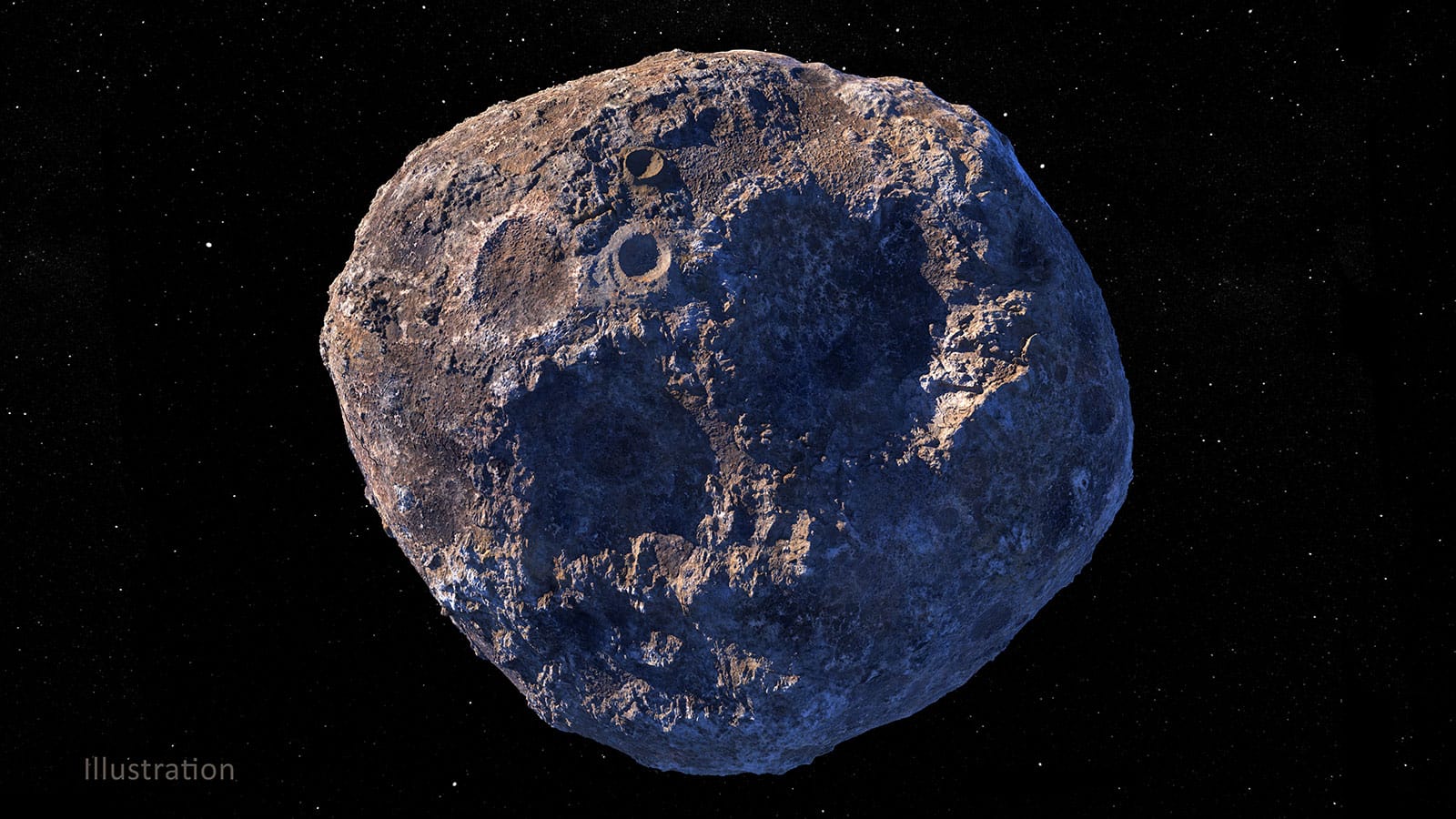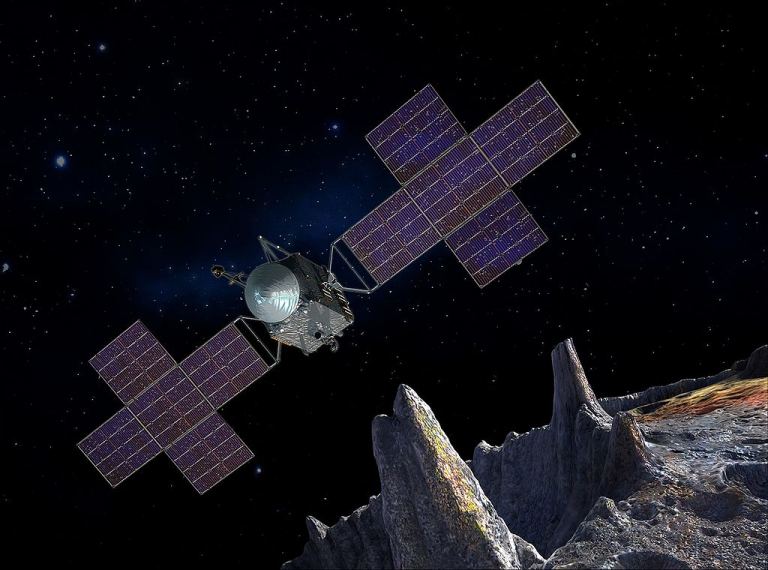The researchers based their work on previous observational data that showed the asteroid is primarily a mixture of three components: metal, low-iron pyroxene and carbonaceous chondrite. A laboratory experiment led the researchers to the conclusion that the density of the asteroid is low. A NASA spacecraft is expected to reach it by 2026

Asteroid 16 Psyche, often referred to as the $10,000 quadrillion asteroid because it is composed of precious metals, may not be quite what it seems. A new paper from the University of Arizona claims that the asteroid is probably more porous and less metallic than previous studies have shown. It still definitely has a mostly metallic structure, but its composition is more complex - and that's good news. Since space mining isn't practical (for the foreseeable future anyway), the real value of 16 psi is scientific: planetary scientists think it's probably the exposed core of an ancient protoplanet in the solar system. A closer investigation of such an object would be very useful for understanding the formation of planets, and this paper is the latest attempt to understand its structure.
The researchers based their work on previous observational data that showed the asteroid is primarily a mixture of three components: metal, low-iron pyroxene and carbonaceous chondrite. In the laboratory, they tried to reproduce the visible and near-infrared spectra seen by the telescopic observations, using different mixtures of the three components. This allowed them to determine with a higher degree of accuracy the percentage of one of the elements that make up the surface of 16 psikha. The result was 82.5% metal (the previous estimate was no less than 94%), 7% iron-poor pyroxene and 10.5% carbonaceous chondrite. They were also able to determine that the density of the asteroid must be quite low, with a porosity of 35%.
As lead author David Cantillo explains: "This decrease in metal content and bulk density is interesting because it shows that 16 Psyche has undergone more changes than previously thought... The implication of a lower metal content than previously thought is that the asteroid may have been exposed to collisions with asteroids containing the more common carbonaceous chondrite , which created a layer in it on the surface of the ground that we observe".
Low density is common in smaller asteroids. NASA's OSIRIS-REx mission to asteroid Bennu found that the building-sized object is more like a pile of stones than a single block of rock, with porosity above 50%. But for larger objects like Psyche (which is the 16th largest asteroid in the Solar System by diameter and the ninth largest by mass—about the size of Massachusetts), such a low density was a surprise. If 16 Psyche really is an ancient planetary core, it doesn't look the way we'd expect it to.

There's only one way to find out what's going on there, of course, and that's to come visit him. NASA has been planning for years for a robotic rover to visit 16 Psyche, and the launch date is approaching. The original plan was to reach the asteroid in 2030, but the schedule has been brought forward to take advantage of a more direct path, and the spacecraft will now launch in 2022 and arrive in 2026. What she'll find when she gets there is open to guesswork, but Cantillo's research has given us better estimates of what to expect, and is building excitement for more surprises to come.
For information on the Universe Today website
More of the topic in Hayadan:
